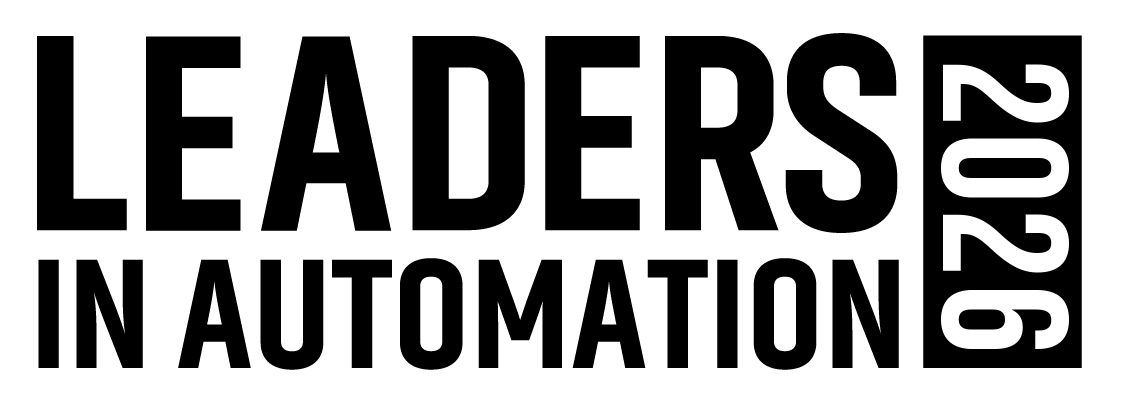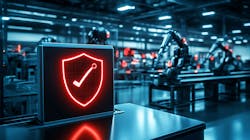AI is Transforming Manufacturing Cybersecurity from Threat Detection to Compliance Automation
- Manufacturers can deploy AI systems to continuously monitor IT/OT environments, automatically detect anomalies and respond to cyber threats faster than humanly possible.
- AI streamlines regulatory compliance by automatically collecting and classifying data, generating audit reports, conducting proactive risk assessments and maintaining explainable decision-making trails required by industry standards like FDA, IEC 62443 and ISO frameworks.
- AI-driven Security Orchestration, Automation and Response platforms automatically execute response playbooks during security incidents, creating timestamped audit trails and documentation that prove compliance adherence to regulators while reducing manual oversight burdens.
From the field to the factory floor to the executive suite, AI technologies can work across all layers of the technology stack to help create smart factories with greater resiliency.
Realizing the benefits of AI in manufacturing, however, requires unifying both sides of the technology house. While IT/OT integration poses significant security and regulatory compliance risks, AI can be used as a strategic tool to assist with IT and OT issues to deliver a comprehensive, unified view of both environments.
That’s why it’s important to understand how AI integration takes place across all layers of the manufacturing technology stack, which can be broadly categorized into four main pillars: infrastructure, data, model and applications. This is a key point because manufacturers face compliance challenges with industry-specific regulations (like those from the FDA, EPA or international trade organizations) at each layer.
Considering this, let’s examine each layer of the manufacturing technology stack and some of the regulatory challenges associated with them.
The infrastructure layer
This is the physical and digital foundation of the manufacturing technology stack. It encompasses all the hardware, networking and computing resources necessary to run factory operations, collect data and enable higher-level software and AI applications. The infrastructure layer is a hybrid of on-premises and cloud technologies, comprised of three key components:
- Operational technology (OT) infrastructure: This is the classic, hardware-based manufacturing infrastructure physically present on the factory floor. Examples include industrial machinery such as CNC machines, robotic arms, assembly lines, control systems like PLCs and SCADA systems, sensors and actuators, and IoT devices. Compliance frameworks like NIST SP 800-82r3, IEC 62443 and NERC CIP provide guidance on securing OT environments and aligning with industry best practices.
- Information technology (IT) infrastructure: This is the computing backbone that stores, processes and analyzes the data generated by the OT layer. Examples include edge computing devices located on or near the factory floor, on-premises data centers and cloud computing instances. Here, regulatory compliance frameworks such as ISO 27001 and 9001 come into play, as well as industry-specific standards and regulations like HIPAA for healthcare data, and PCI DSS for credit card and digital payment information.
- Connectivity infrastructure: This network enables communication between all OT and IT components. It includes all industrial networks, such as wired and wireless networks, as well as network hardware like switches, routers and firewalls. This infrastructure also must meet certain safety, security and emissions regulations depending on location.
The model layer
This is where a manufacturing company’s core intelligence lives. That’s why machine learning (ML) models are developed, trained and tested at this layer. Key AI technologies used here include:
- Machine learning and predictive analytics: The first generation of AI and ML algorithms are trained on historical data to predict future outcomes, enabling applications like predictive maintenance, demand forecasting and price forecasting for raw materials.
- Natural language processing (NLP) helps AI-generated systems understand and communicate better with humans, which enables factory workers to better communicate with systems using natural language.
- Generative AI is used for innovative product design, where algorithms generate thousands of design iterations based on specified constraints. It's also being applied to create synthetic data to train other AI models and generate work instructions and reports.
The application layer
This is where all of a manufacturer’s insights and automation generated by the AI models are synthesized into action, in the form of a product delivered to end-users. This includes intuitive dashboards for monitoring productivity, operations, alerts for maintenance and robotic systems that execute complex tasks. At this layer, standards like ISO/IEC/IEEE 12207 provide a framework for managing the entire software life cycle, from planning and development to maintenance and retirement. Industry-specific regulations also come into play here, such as FDA regulations for medical, pharmaceutical or food and beverage manufacturing.
Explainable AI is critical for cybersecurity compliance because it allows human experts to understand why a model made a specific decision. This transparency enables security analysts to validate, override or act on an AI's findings and produce an auditable trail of decision-making for auditors.
Cybersecurity compliance reinforcement
A key application for AI lies in protecting manufacturing organizations interconnected systems from the proliferation of cyber threats. In a manufacturing Security Operations Center (SOC), AI can support human analysts as virtual security analysts.
Manufacturers can leverage these AI capabilities to supercharge their SOC and make their security teams more productive using:
- Identity threat detection and response: AI-powered systems continuously monitor network traffic and OT environments for unusual activity. By learning the normal operational patterns of machinery and networks and creating a baseline for that behavior, these systems can instantly flag any anomalies that might indicate a cyberattack, such as unauthorized access or malware, allowing for a much faster response than humanly possible.
- Network detection and response (NDR): AI-powered NDR enables security teams at manufacturing facilities to quickly analyze and learn from IT/OT network traffic, user behavior and threat intelligence datasets. NDR uses AI to identify anomalous patterns and indicators of compromise that would otherwise go unnoticed. Machine learning models can identify deviations from previously determined baseline network behavior, detecting potential zero-day attacks, ransomware, insider threats and lateral movement.
- Framework-based automated vulnerability management: Using widely accepted security assessment frameworks like Mitre Att&ck, AI tools can automatically scan for vulnerabilities across a manufacturer's vast network of connected devices, from cloud instances to industrial robots to sensors. Based on the potential severity of the threat, they can then prioritize which vulnerabilities to fix first, helping security teams focus their efforts where they matter most.
AI can analyze historical data and current operations to identify potential compliance risks before they become violations. By adopting an AI-driven approach, manufacturers can address issues such as a machine falling out of calibration or a process nearing its regulatory limit.
Streamlining regulatory compliance
Meeting industry-specific regulations can be a daunting task. While AI can introduce risk to the manufacturing technology stack, it can also be used as a strategic tool to simplify compliance audit trails and reporting for manufacturers by delivering greater visibility and repeatable processes. Some examples include:
- Intelligent data management and reporting: Manufacturers must maintain extensive records for compliance audits. AI automates the collection, classification and storage of this data. It can also generate compliance reports automatically, saving countless hours of manual work and reducing the risk of human error.
- Proactive risk assessment: AI can analyze historical data and current operations to identify potential compliance risks before they become violations. By adopting an AI-driven approach, manufacturers can address issues such as a machine falling out of calibration or a process nearing its regulatory limit.
- Data governance and privacy: Regulations like GDPR require manufacturers to manage the data used by AI systems responsibly, especially if it includes personal information. Manufacturers must ensure their AI data pipelines are secure and compliant.
- Audit trail and validation: AI-driven decisions must be explainable and auditable for regulated industries like pharmaceuticals (FDA regulations) or aerospace. Manufacturers need to demonstrate to regulators why an AI system made a particular decision, such as flagging a product for defects. This drives the need for "explainable AI" that can provide clear reasoning for its outputs.
Securing industrial automation and control systems
The IEC 62443 standard is meant to secure industrial automation and control systems, the backbone of modern manufacturing. AI's role in maintaining security and compliance here is twofold:
- Meeting security level targets: IEC 62443 defines security levels for plant zones and conduits. AI enhances these levels via advanced threat detection and vulnerability management, e.g., monitoring robot-controller traffic for malicious commands to ensure system integrity.
- Enhancing situational awareness: AI is beneficial here because it continuously analyzes OT data, offering deep insights into network security posture. This helps manufacturers maintain situational awareness and comply with IEC 62443 monitoring and logging requirements.
By learning the normal operational patterns of machinery and networks and creating a baseline for that behavior, these systems can instantly flag any anomalies that might indicate a cyberattack.
AI auditability
Auditability is the capacity to maintain a complete, immutable record of your AI system's operations for review by internal teams or external regulators. This provides a digital paper trail that proves what your system did and why.
Moving beyond theory, here are some actionable steps to build auditability, explainability and real-time documentation into your AI deployments.
- Establish an immutable logging policy: All AI systems must log critical information to a "write-once, read-many" storage system (e.g., a secured cloud bucket or on-premises log server like a SIEM [security information and event management]).
- Implement data and model versioning: Your teams must be able to recreate the circumstances of any AI-driven event. This requires using tools (like MLFlow, DVC [Data Version Control] or vendor-specific platforms) to version control the datasets used for training and the deployed models. If an auditor says: "Show me why the model from last Tuesday at 2:15 p.m. flagged this part as defective," your AI must be able to answer this with precision.
Explainable AI is critical for cybersecurity compliance, because it allows human experts to understand why a model made a specific decision, moving beyond the "black box" approach. This transparency enables security analysts to validate, override or act on an AI's findings and produce an auditable trail of decision-making for auditors.
Automate real-time documentation of event response
In the event of a cyber or safety incident, your response must be fast, accurate and — most importantly — provable. Regulators expect documentation of your processes for containing threats. Here are some actionable steps to achieve this using AI:
- Deploy an AI-driven SOAR platform: An AI-powered Security Orchestration, Automation and Response (SOAR) platform serves as the connective tissue for compliance. Configure your SOAR to automatically execute a pre-approved playbook when an AI system generates an alert.
- Automate response and log generation: Dynamic, AI-generated playbooks can automatically perform and document every step. This creates a timestamped record of due diligence for an auditor.
- Conduct simulation training and document regular drills: Schedule regular, mandatory drills where your team simulates AI-detected threats. Use your AI-driven platform to run the response and then use its automatically generated reports as evidence for compliance audits. These reports will help prove that your systems and processes work in practice, which is a key requirement for demonstrating adherence to standards such as IEC 62443.
By embracing AI and taking these concrete, actionable steps, manufacturing leaders are not merely fulfilling regulatory obligations but strategically transforming cybersecurity compliance. This mind shift moves it from a reactive burden, often viewed as a necessary evil, into a proactive, integral and empowering component of their overarching AI strategy.
Taking a more holistic approach to AI-driven cybersecurity and compliance ensures that security is not an afterthought, but a significant part of overall operations. This is key for building a more secure, resilient, and trustworthy manufacturing environment.
Subo Guha is senior vice president of product management at Stellar Cyber.
More cybersecurity insights from Automation World:
About the Author
Subo Guha
Subo Guha is senior vice president of product management at Stellar Cyber, where he spearheads the development of their award-winning, AI-driven Open XDR solutions. With more than 25 years of experience, Subo has held senior leadership roles at industry-leading companies like SolarWinds, Dell, N-able, and CA Technologies.

Leaders relevant to this article:

